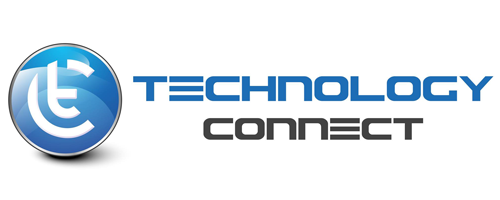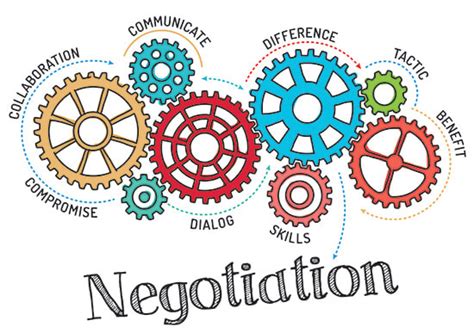

Using a structured and proven negotiation framework will help you to negotiate a significantly better contract and deliver the expected business benefits.
It’s that time of the year again – yes, it’s RFP time. New technology deals are being planned, RFPs are being issued by companies wishing to transform the business and deliver significant value to their organisation’s top or bottom lines. The business cases have been approved. It took a few months; lots of re-iterations and justifications; and it’s finally got “the tick”.
Technology suppliers are responding with proposals to RFPs – hoping to get them submitted prior to the holiday season so that they can spend time with their families and friends, rather than preparing proposals for yet another strategic opportunity during this festive period.
We go through this process every year. At Technology Connect, we get involved in a lot of Market Testing during this period. It’s almost our exchange of “end of year presents” to each other – buyer to supplier and supplier to buyer. We give each other something to be explored and enjoyed next year. However, the journey to achieving the desired business benefits has just started, and after buyers receive the supplier proposals, and have selected the most suitable supplier and solution –they then need to negotiate a suitable contract (including optimal price, realistic quantities, short delivery time-frames etc.), so that they can execute the project and realise the expected (and promised) benefits.
With the upcoming negotiation just around the corner, it is time to start to prepare for this important event. To help us prepare for a negotiation, we should use a negotiation framework. However, not everyone has a negotiation framework, and not every framework is helpful throughout the negotiation process. Is your negotiation framework helping you? Do you have one? Do you feel ready for the upcoming negotiation? Do you have the tools, techniques and capabilities to achieve the results you set out in the business case? If you have all of these, then you don’t need to read any further, because you are well prepared, and capable of achieving the outcomes you have promised your executives. If you don’t, which in my experience is very often the case, then you need to start thinking about and preparing for your upcoming negotiation. You may think: “Not my problem, I will just engage my procurement department, and they will sort this out for me.” This may be the best option, but if you are accountable for the outcome of the negotiation, you may want to be as prepared as possible – if not only to get the best assistance from your colleagues in the procurement department.
You may be new to negotiation, or your upcoming negotiation is critical for your next performance review and peer group credibility, so you want to make sure you do everything you can to make the negotiations a success. How do you go about making sure that you realise the benefits as set out in your business case, e.g. cost savings, productivity improvements or both? Well, this article provides a negotiation framework to help you. There are of course many aspects of your upcoming negotiation that requires further preparation and analysis, but no doubt this framework will get you started and if you follow it, you will improve your chances of a successful negotiation outcome and thereby set yourself up for an efficient implementation of your technology-driven business transformation.
Technology Connect’s Negotiation Framework
A negotiation framework considers negotiation across the end-to-end process. At Technology Connect, we have developed, and successfully used in client situations (i.e. technology buyers), a negotiation framework based on three main phases, as set out in Figure 1 below:
1. Pre-negotiation, where the negotiation is prepared;
2. Negotiation, where the negotiation takes place; and
3. Post Negotiation, where we realise the negotiation outcomes.
Figure 1: Negotiation Framework

Source: Technology Connect
Each of the three phases have a set of activities, outputs and tools. Figure 1 is a simplified version of our negotiation framework. The Negotiation Strategy development in Phase 1 (Pre-negotiation) contains several sub-activities, e.g. determination of negotiation objectives, leverage analysis, negotiation style etc. Let’s explore each of these phases in more detail, so that they may be of practical use to you in your upcoming negotiations.
Phase 1: Pre-negotiation
This phase is critical in setting you up for a great negotiation experience and outcome. This is where you establish the foundation for your negotiation. We call it the Preparation. The initial step is to ensure that you have obtained and analysed all of the relevant input documentations, e.g. your sourcing strategy, supplier proposals, evaluation report, business case etc. These documents are critical in designing your negotiation strategy. The negotiation strategy is effectively your road map for the negotiation. It details your negotiation objectives, negotiation style, leverage, tactics, process, team, venue and governance.
Before you are ready to execute the negotiation strategy, you need to establish and prepare your negotiation team. This typically includes a review and discussion of the negotiation strategy, the roles each team member will assume, and when and how to deploy your tactics. In addition, the governance team and its accountabilities must be defined and agreed. The role of the governance team is to act as the “higher authority”, including approval of concessions outside of the pre-approved range, e.g. accepting of a lower price at the expense of longer delivery time.
Phase 2: Negotiation
This phase contains 3 sub-phases. Rather than go straight to the negotiation table, it is important to develop a detailed understanding of the negotiation situation and the other party’s interests, needs and risks/concerns. As a buyer of products/services, it is important to look at these areas from both sides of the negotiation table. From a buyer’s perspective, these key interests and needs are your negotiation objectives. From a supplier perspective, it is often assumed that the customer is only interested in a low price, has unrealistic implementation expectations, and wishes to off-load the majority of risks to the supplier. This sub-phase is referred to as Initiation in Figure 1 above.
The Initiation sub-phase also consists of meeting the supplier team (including executives and the “at the table” negotiation team) to establish rapport between the negotiation team members (assuming that you want the relationship to endure) and to signal your expectations, how you view the negotiation that is about to take place (reflecting your chosen negotiation style) and of course – to listen. The last part is often forgotten by the buyer, who is so concerned with getting his/her own issues and needs on the table. The experienced negotiator listens a lot more than they speak. The output of the Initiation phase is a refined and updated version of your negotiation objectives, understanding of the key issues and appreciation of the tactics you plan to use (including your response to supplier tactics).
The negotiation itself can take a number of formats, with the most common being face-to-face negotiations. However, it is not uncommon that some negotiations, or at least parts of a technology negotiation include some form of telephone or videoconference negotiation. In our digitally connected world the supplier account management and delivery team may be based in Australia, but some of the software development may be provided from Eastern Europe, the supplier head office and executives may be based in North America and the supplier’s support provided out of a call centre in South East Asia. To ensure the negotiation is executed as efficiently as practical, it is therefore critical that the negotiation processes and tools are defined and agreed by both parties prior to the bargaining taking place. At Technology Connect, we use a number of simple, but effective negotiation tools such as: Key Issues List, Action & Decision Log and Document Tracker. The Document Tracker is often under-appreciated at the start of the negotiation, but both parties can easily lose control of the versions of many contract schedules, appendices, annexes etc. It is beyond the scope of this article to provide a detailed description of the processes, tools, techniques and tactics optimally applied during the negotiation, but as the bargaining progress, issues are resolved, concessions made and received, it is our experience that it is best to continuously update the contract documents reflecting agreements reached. This is particularly the case in complex and strategic technology negotiations, where there are several sub-sections and the contract negotiation is conducted over several weeks. The end of the Bargaining sub-phase is typically a short list of key issues or sometimes “deal breaker” issues. These issues carry high risk for either or both parties, and as such concessions are typically not offered until the end of the Bargaining process and typically require executive or Board approval in principle.
This leads us to the third sub-phase of the Negotiation which is referred to in Figure 1 as the Closing sub-phase. In this phase, the parties reach an agreement in principle, which can be taken back into both the buyer and supplier organisation for a final review and approval before the contract can be executed (i.e. signed). At first glance, it may appear as a formality to go from agreement in principle to contract signature. After all, if the negotiation teams are empowered, then the deal is practically done, right? Assuming the negotiation is related to complex and strategic technology, i.e. high investments and/or business impact, it is not unusual for the final approval to require CEO or Board approval. As such, this requires briefing company Directors, non-executive Directors, and sometimes industry regulators. The Contract Summary is an important tool, which serves to recap on the deal as well as brief the approval authorities. An important element of Closing is to ensure both parties have made commitments to close the deal and have “skin in the game” if the contract approval, and more importantly the contract deliverable, is delayed. The final piece of the Closing sub-phase is to develop the Governance Manual for the vendor management team, or the team responsible for managing the supplier and monitoring the benefits realisation. The Governance Manual sets out the key responsibilities and obligations of both parties; it includes the timing of key deliverables, structure and format of meetings and how success will be measured and payments made. (For additional insights into Vendor Management, please refer to Technology Connect’s Insight Paper on how to ‘Realise benefits through vendor management framework’ on www.technologyconnect.com.au / Insights & Ideas / Latest Insights / Vendor Management.)
Phase 3: Post Negotiation
The period after contract signature is often not considered part of the negotiation process. However, at Technology Connect, we believe this is critical to ensure that the negotiation effort actually delivers on the benefits communicated to the executives and organisational stakeholders. As such, we strongly recommend that the results of the contract are compared to the expected benefits set out in the Benefits Realisation Plan. Deviations from expected results, e.g. meeting key implementation milestones, must be analysed, communicated and acted upon by both parties. We also strongly recommend that Post Negotiation Reviews are conducted to capture feedback on the negotiation framework, processes, tools and team members. The aim of these reviews is not to identify improvement areas in the contract, but through a structured learning process strengthen the negotiation framework, processes and tools, so that the next critical and complex technology negotiation becomes even more efficient and delivers even greater results.
In summary, a comprehensive and efficient negotiation framework will significantly increase your probability of negotiating a successful set of contract outcomes. It will also ensure you enjoy the negotiation process much more than if you get caught in the myriad of potential complexities that form part of most strategic and complex contract negotiations. Ultimately, it is about you getting the results you have worked hard to achieve – We hope this framework help you as much as it has helped many of our clients.
If interested in further details of the Technology Connect negotiation framework, processes and tools, or in how we assist organisations prepare for negotiations, please visit our web site on www.technologyconnect.com.au or contact us on info@technologyconnect.com.au
Tom is the founder and managing partner of Technology Connect. He has 20 years of experience in the IT industry and management consulting. He has advised senior executives in the areas of sourcing strategy, market testing, contract negotiation and vendor management across a broad range of industries and geographies including Australia, New Zealand, Asia and Europe.

